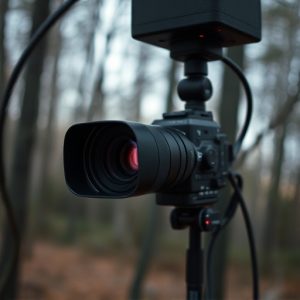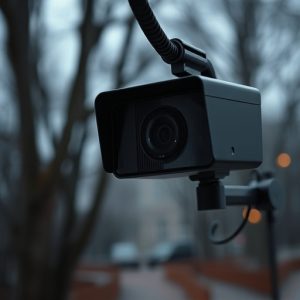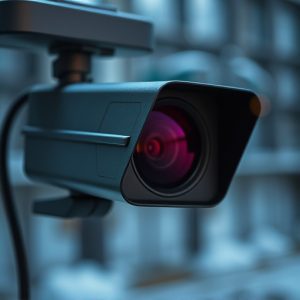Nanny Cam Tutorial: Uncover Hidden Cameras with RF Detectors
Nanny cams disguised as everyday items offer covert monitoring solutions for parents, homeowners, an…….
Nanny cams disguised as everyday items offer covert monitoring solutions for parents, homeowners, and businesses, enhancing privacy and security but sparking debates about privacy invasion. Selecting the right RF detector with broad frequency ranges and advanced features streamlines identification of these hidden cameras integrated into household objects like smoke detectors or toys. Conducting a sweep involves systematic steps: identify hiding spots, scan for signal spikes, perform manual inspections, verify functionality and power sources to spot cleverly disguised nanny cams. Regular observations and inspections are key to identifying these concealed devices.
Uncover the hidden world of nanny cams with this comprehensive guide. In today’s digital age, privacy concerns are paramount, making it crucial to be aware of these sophisticated surveillance devices often disguised as everyday household items. This tutorial delves into the intricacies of detecting hidden cameras using RF (radio frequency) detectors, providing a step-by-step approach for identifying and neutralizing these concealed trackers. From understanding common disguises to selecting the right tools, you’ll learn how to navigate this complex landscape.
- Understanding Nanny Cameras and Their Disguises
- Selecting the Right RF Detector for the Job
- Conducting a Sweep: Step-by-Step Guide
- Common Disguises and How to Spot Them
Understanding Nanny Cameras and Their Disguises
Nanny cameras, also known as hidden cameras, are small devices designed to capture video or audio discreetly. These cameras often take the form of everyday household items to avoid detection. Popular disguises include objects like smoke detectors, light bulbs, and even toys. The use of Nanny Cam Disguised as Household Items allows for covert monitoring, making it an attractive solution for parents checking on their children, homeowners ensuring security, or businesses maintaining surveillance.
By integrating these cameras into seemingly innocuous items, users can capture footage without raising suspicion. This innovative approach to privacy and safety has sparked both interest and debate. While some embrace the technology as a means of protection, others raise concerns about invasion of privacy and ethical implications. Understanding the variety of disguises available is crucial for anyone considering the use of hidden cameras.
Selecting the Right RF Detector for the Job
Choosing the appropriate RF (Radio Frequency) detector is pivotal when attempting to locate hidden cameras, especially those disguised as everyday household items like a nanny cam. Different detectors offer varying sensitivity levels and frequency ranges, so understanding your target device’s specifications is key. For instance, some detectors excel at picking up lower-frequency signals often used in older camera models, while others are designed to detect newer technologies operating on higher frequencies.
When dealing with hidden cameras disguised as regular items, like a clock or a light bulb, opt for a versatile detector capable of sweeping a broad frequency spectrum. This ensures you can capture signals from various types of hidden cameras without needing multiple tools. Additionally, consider detectors with advanced features such as automated scanning and real-time alerts, making the process more efficient, especially in situations where quick identification is crucial.
Conducting a Sweep: Step-by-Step Guide
Conducting a sweep for hidden cameras, particularly those disguised as everyday household items like a nanny cam, requires methodical and careful steps. Start by identifying potential hiding spots, such as clocks, smoke detectors, or even electrical outlets. These places are commonly used to conceal cameras due to their accessibility and lack of suspicion. Next, use a RF (Radio Frequency) detector to scan the area. Turn it on and sweep the device over every surface, paying close attention to any sudden spikes in readings. A sudden jump in signals indicates an active wireless camera.
Once you’ve identified a potential source, perform a manual inspection. Remove any suspicious items and examine them closely for any signs of a hidden camera module. Check for tiny lenses or LED indicators that might be concealed within the item’s design. If you suspect a nanny cam disguised as a household item, consider its functionality first. Verify if it connects to a power source appropriately and if there are any visible wires leading from it. Any irregularity could point to a hidden camera setup.
Common Disguises and How to Spot Them
Many hidden cameras, commonly known as nanny cams, are disguised as everyday household items to avoid detection. Creative and innovative manufacturers design these devices to look like everyday objects such as smoke detectors, light bulbs, or even toys. This makes them an attractive option for those seeking to monitor their homes or offices discreetly.
When spotting these hidden cameras, it’s essential to be observant and aware of any unusual items or deviations from the norm. For instance, a smoke detector that seems too new or differs in appearance from others in the same area might be a red flag. Similarly, a toy with an irregular shape or a light bulb that appears unusually bright could indicate a hidden camera. Regularly inspecting common hiding spots and being vigilant can help you identify these nanny cams disguised as household items.
Detecting hidden cameras, especially those disguised as everyday household items like a nanny cam, requires knowledge and the right tools. By understanding common disguises and selecting an appropriate RF detector, you can successfully conduct a sweep to ensure privacy and security in your home. Remember, staying vigilant is key; keep up-to-date with new camera technologies and their creative disguises to protect yourself and your family effectively.


